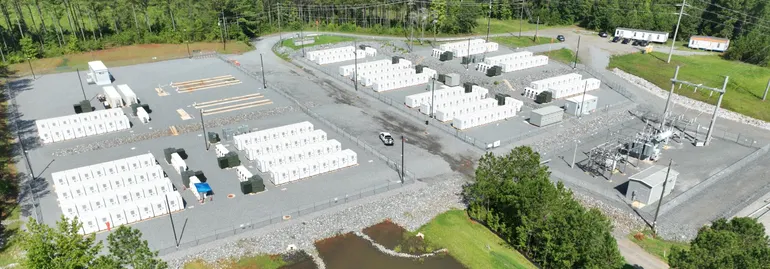DLR fuel cell for hydrogen aircraft crosses megawatt threshold in tests – Aerospace Testing International

Report on Megawatt-Class Fuel Cell System Development and Alignment with Sustainable Development Goals
1.0 Executive Summary
The German Aerospace Center (DLR) has reported a significant technological milestone in the development of high-power, hydrogen-based fuel cell systems. Through its BALIS test infrastructure, DLR successfully operated a fuel cell system and electric motor components at power levels exceeding one megawatt. This development is a critical step towards decarbonizing heavy transport sectors and directly supports the achievement of several United Nations Sustainable Development Goals (SDGs), particularly those related to clean energy, industry innovation, and climate action.
2.0 Project Milestones and Technological Significance
The successful test represents a landmark achievement in the commissioning of the BALIS test facility and the validation of its first-generation fuel cell system. The project addresses a market gap for commercially available systems in this power class.
2.1 Key Achievements
- Successful operation of a coupled fuel cell system and electric motor at over one megawatt.
- Integration of 12 interconnected fuel cell modules, each containing over 400 individual cells.
- Demonstration of stable operation and control of a complex, high-output powertrain.
2.2 Future Objectives
- Achieve stable, long-duration operation at power levels consistently above one megawatt.
- Conduct dynamic profile testing to simulate real-world operating conditions for various applications.
- Develop and refine advanced operating strategies for complex, modular fuel cell systems.
3.0 Contribution to Sustainable Development Goals (SDGs)
The BALIS program’s focus on green hydrogen fuel cells provides a direct pathway to achieving key global sustainability targets. The technology is poised to make substantial contributions across multiple SDGs.
3.1 SDG 7: Affordable and Clean Energy
- The project advances clean energy technology by developing propulsion systems that run on green hydrogen, directly supporting the transition away from fossil fuels (Target 7.2).
- By creating high-efficiency power systems for transport, it contributes to improved energy efficiency on a systemic level (Target 7.3).
3.2 SDG 9: Industry, Innovation, and Infrastructure
- This initiative represents a significant investment in research and innovation for sustainable technologies (Target 9.5).
- The development of megawatt-class fuel cells helps upgrade industrial infrastructure for sectors like shipping and heavy-duty road transport, making them more sustainable (Target 9.4).
- It enhances Germany’s technological capacity and competitiveness in the global green technology market.
3.3 SDG 13: Climate Action
- The primary goal of enabling carbon dioxide-free mobility directly addresses the need for urgent action to combat climate change.
- The technology provides a viable solution for decarbonizing hard-to-abate sectors, including aviation, shipping, and heavy-duty vehicles, which are major sources of greenhouse gas emissions.
3.4 SDG 11: Sustainable Cities and Communities
- By providing a clean power source for heavy-duty road vehicles and ships, this technology can help reduce air and noise pollution in urban centers and port cities, contributing to healthier and more sustainable communities (Target 11.6).
4.0 Conclusion and Strategic Outlook
The DLR’s achievement in testing a megawatt-class fuel cell system is a critical advancement in sustainable propulsion technology. The project not only pushes the boundaries of engineering but also provides a tangible solution for meeting international climate and sustainability commitments. Its successful development and future application in aviation, maritime, and terrestrial transport will be instrumental in advancing the global agenda for clean energy, sustainable industry, and climate action as outlined in the SDGs.
Analysis of Sustainable Development Goals in the Article
-
Which SDGs are addressed or connected to the issues highlighted in the article?
The article highlights advancements in hydrogen fuel cell technology for heavy-duty transport, which directly connects to several Sustainable Development Goals (SDGs). The primary goals addressed are:
- SDG 7: Affordable and Clean Energy: The core topic is the development of a powerful fuel cell system that runs on hydrogen, specifically “green hydrogen,” which is a clean energy source intended to power transport systems.
- SDG 9: Industry, Innovation, and Infrastructure: The article details a “testing milestone” in a high-tech research and development program (BALIS). This represents significant innovation aimed at creating new, sustainable infrastructure for the transport industry (ships, heavy-duty vehicles, aviation) and strengthening “Germany’s high-tech industries’ capacity and competitiveness.”
- SDG 13: Climate Action: The explicit purpose of this technology is to enable “carbon dioxide-free mobility” and reduce “dependence on fossil fuels.” This is a direct measure to combat climate change by mitigating greenhouse gas emissions from the transport sector.
-
What specific targets under those SDGs can be identified based on the article’s content?
Based on the article’s focus, the following specific SDG targets can be identified:
- Target 7.2: By 2030, increase substantially the share of renewable energy in the global energy mix. The development of propulsion systems running on “green hydrogen” contributes directly to increasing the share of clean energy in the transport sector, a major consumer of energy.
- Target 9.4: By 2030, upgrade infrastructure and retrofit industries to make them sustainable… with greater adoption of clean and environmentally sound technologies. The megawatt-class fuel cell system is a “clean and environmentally sound technology” designed to be integrated into heavy-duty transport, thereby upgrading and making this industrial sector more sustainable.
- Target 9.5: Enhance scientific research, upgrade the technological capabilities of industrial sectors… and encourage innovation. The article is centered on the DLR’s research program (BALIS), which is a clear example of enhancing scientific research to develop advanced propulsion systems and upgrade technological capabilities.
- Target 13.2: Integrate climate change measures into national policies, strategies and planning. The development of this technology is a strategic action to achieve climate goals by providing a viable alternative to fossil fuels in transport, which is a key part of national and international climate strategies.
-
Are there any indicators mentioned or implied in the article that can be used to measure progress towards the identified targets?
Yes, the article mentions and implies several indicators that can be used to measure progress:
- Power Output of Clean Energy Systems: The article explicitly states the system has been operated at “more than one megawatt” with a goal of “up to 1.5MW.” This power output is a direct indicator of the technological capability and readiness of this clean energy solution for heavy-duty applications, measuring progress towards Target 9.4.
- Reduction of CO2 Emissions: The stated goal of achieving “carbon dioxide-free mobility” implies that a key performance indicator for this technology is the complete elimination of CO2 emissions from the vehicles it powers. This directly measures progress towards Target 13.2.
- Investment in and Milestones of R&D: The achievement of the “testing milestone” itself is an indicator of progress in research and innovation (Target 9.5). The existence of the BALIS program and its collaboration with research institutes points to ongoing investment and activity in this field.
- Operational Stability and Duration: The plan to “operate the test system stably for extended periods” and run “dynamic profiles with varying high power outputs” implies that operational reliability and endurance are key indicators for assessing the technology’s real-world viability and its contribution to a sustainable energy mix (Target 7.2).
SDGs, Targets, and Indicators Summary
| SDGs | Targets | Indicators |
|---|---|---|
| SDG 7: Affordable and Clean Energy | 7.2: Increase substantially the share of renewable energy in the global energy mix. | Development and operational stability of propulsion systems running on green hydrogen. |
| SDG 9: Industry, Innovation, and Infrastructure | 9.4: Upgrade infrastructure and retrofit industries to make them sustainable… with greater adoption of clean and environmentally sound technologies.
9.5: Enhance scientific research, upgrade the technological capabilities of industrial sectors… and encourage innovation. |
The power output of the fuel cell system (achieving over 1 megawatt).
The successful completion of research milestones within the BALIS program. |
| SDG 13: Climate Action | 13.2: Integrate climate change measures into national policies, strategies and planning. | The potential for “carbon dioxide-free mobility,” indicating a reduction in greenhouse gas emissions from the transport sector. |
Source: aerospacetestinginternational.com

What is Your Reaction?
 Like
0
Like
0
 Dislike
0
Dislike
0
 Love
0
Love
0
 Funny
0
Funny
0
 Angry
0
Angry
0
 Sad
0
Sad
0
 Wow
0
Wow
0










































































